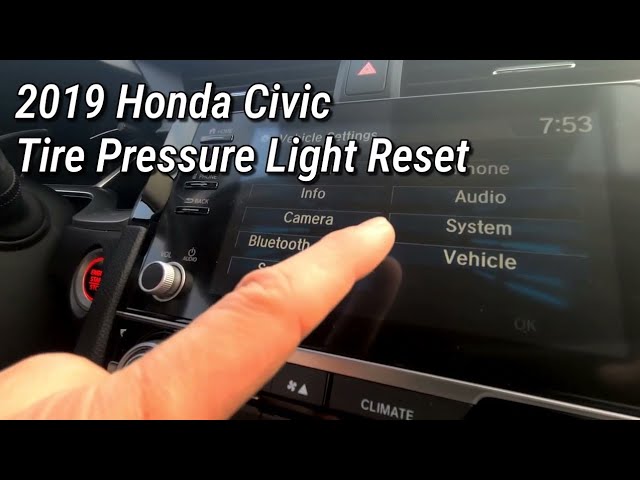As an Amazon Associate, I earn from qualifying purchases
Have you ever noticed the “B1” light pop up on your Honda Civic’s dashboard and wondered what it means? Seeing unfamiliar symbols or codes can be confusing and even a little worrying.
But don’t let it stress you out—understanding what “B1” stands for is easier than you think. You’ll discover exactly what that code means, why it appears, and what steps you should take to keep your Civic running smoothly. Keep reading to take control of your car’s health and avoid costly surprises down the road.

Credit: www.williamshondaelmira.com
B1 Code Basics
The B1 code on a Honda Civic is part of the car’s maintenance reminder system. It helps owners know when to perform specific service tasks. Understanding this code can save money and keep the car running smoothly.
Each part of the B1 code has a special meaning. The “B” tells you to do an oil change and check other parts. The “1” asks for additional checks like brakes and tires. Together, they guide you on what maintenance is needed.
What Triggers B1 Code
The B1 code appears after a set driving distance or time. It is not a sign of a problem but a reminder. The car’s computer tracks mileage and time since the last service. When it reaches the limit, the B1 light turns on.
It can also come on if the oil quality drops or the engine runs longer than usual. The code resets only after the service is done and the system is cleared by a mechanic or the owner.
Common Symptoms
The main symptom is the B1 message on the dashboard display. It usually shows with a wrench or service icon. There are no strange noises or performance issues linked to this code alone.
Ignoring the B1 code can lead to worn engine oil and reduced car efficiency. Over time, this might cause more serious problems. Responding to the code keeps the Civic healthy and avoids costly repairs.

Credit: www.youtube.com
Oil Change Importance
Regular oil changes keep your Honda Civic running smoothly. Oil lubricates engine parts, reducing wear and tear. Clean oil helps the engine stay cool and work efficiently. Ignoring oil changes can cause engine damage and costly repairs. The B1 light on your dashboard reminds you to change the oil soon. Understanding oil change importance helps you protect your car and save money.
Recommended Oil Type
Honda Civic uses specific oil types for best performance. Check your owner’s manual for the exact oil grade. Most Honda Civics need 0W-20 synthetic oil. This oil flows easily and protects the engine in cold and hot weather. Using the right oil keeps the engine clean and efficient. Avoid cheap oils that can harm the engine over time.
Oil Change Interval
Follow the schedule in your owner’s manual for oil changes. Most Honda Civics need an oil change every 7,500 to 10,000 miles. Severe driving conditions may require more frequent changes. The B1 light alerts you based on your driving habits. Regular oil changes prevent sludge buildup and engine damage. Stick to the interval to keep your car healthy and reliable.
Tire Rotation Role
B1 on a Honda Civic means it is time for a tire rotation. This service helps your tires wear evenly and last longer. Regular tire rotation keeps your car safe and running smoothly.
Rotation Patterns
Tire rotation means moving tires from one position to another. This helps tires wear evenly. Different cars need different rotation patterns. For a Honda Civic, the common pattern is front tires to the back on the same side. Back tires move to the front but switch sides. This pattern balances tire wear and extends tire life. Following the right pattern keeps your car safe and smooth.
Benefits Of Regular Rotation
Rotating tires regularly improves tire life. It prevents uneven wear that causes early tire replacement. Balanced tires help your car handle better. It also increases fuel efficiency by reducing rolling resistance. Regular rotation saves money on tires and fuel. Plus, it keeps your ride comfortable and safe. Watch for the B1 code on your Honda Civic. It signals time for tire rotation and other services.
Resetting The Maintenance Light
The maintenance light on your Honda Civic signals when service is due. Resetting this light after maintenance is important. It helps keep track of future oil changes and checkups. Resetting the light is simple and takes only a few minutes.
This guide shows you how to reset the maintenance light. Follow the steps carefully to clear the B1 code. Your car’s system will then count down to the next service.
Step-by-step Reset Guide
Turn the ignition switch to the ON position. Do not start the engine.
Press the accelerator pedal fully three times within five seconds.
Watch the maintenance light. It will blink and then turn off.
Turn off the ignition. Then start the engine to check the light.
The maintenance light should now be off. The reset is complete.
When To Reset
Reset the maintenance light only after completing the required service.
The B1 code means an oil change is needed. Change the oil first.
Resetting too soon gives false service alerts. It may cause confusion.
Keep track of mileage or time between oil changes. Reset after each service.
Additional Maintenance Tips
Keeping your Honda Civic in top shape means more than just following the B1 maintenance code. Regular checks help your car run smoothly and avoid costly repairs. Simple steps can protect your engine and keep you safe on the road.
Checking Fluid Levels
Fluids keep your Civic’s engine and parts working well. Check engine oil, coolant, brake fluid, and transmission fluid often. Low or dirty fluids can cause damage. Use the dipstick or reservoir marks to see levels. Top off with the right fluid if needed. Clean fluids help your car last longer and run better.
Inspecting Brake Pads
Brake pads stop your car safely. Worn pads can cause noise and longer stopping distances. Look for thinning pads or strange sounds when braking. Thin pads should be replaced quickly. Good brakes mean safer driving and less damage to other parts. Check your brake pads regularly to avoid problems.

Credit: www.donayreshonda.com
Frequently Asked Questions
What Does B1 Mean On A Honda Civic Dashboard?
B1 is a maintenance code. It tells you to change the oil and check other parts soon.
How Often Should I Reset The B1 Light On Honda Civic?
Reset the B1 light after completing the oil change and maintenance tasks.
Can I Drive With The B1 Light On My Honda Civic?
Yes, but it is best to fix the maintenance soon to avoid damage.
What Maintenance Tasks Does B1 Code Include On Honda Civic?
B1 means change engine oil and check items like brakes and tires.
How To Reset B1 Light On Honda Civic Without A Tool?
Turn the ignition on, press the gas pedal three times, then turn off.
Why Does The B1 Light Come On After Oil Change?
The light stays until you reset it manually or with a scanner tool.
Conclusion
The B1 code on a Honda Civic shows a specific maintenance reminder. It helps keep your car running smoothly and safely. Knowing what B1 means saves time and avoids confusion. Regular service checks improve your car’s performance. Pay attention to this code to protect your vehicle’s health.
Simple steps keep your Honda Civic in good shape. Stay aware of dashboard messages for better care. Understanding codes like B1 makes car ownership easier.
As an Amazon Associate, I earn from qualifying purchases


